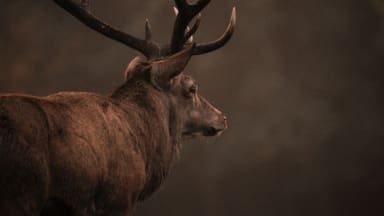
The National Trust (NT) review indicates how the loss of predictable weather patterns and traditional seasonal shifts are causing chaos for nature. Over the past year we have experienced a dry winter, the warmest June on record, a wet and mild autumn and back-to-back storms. 2023 is anticipated to be the warmest year on record and 2024 forecast to be even warmer, the NT is sounding the alarm for UK wildlife.
2023 Weather
Winter
The dry winter failed to ease low water levels caused by the lack of 2022 rainfall. The mild conditions saw species such as great crested newts and common lizards on the Norfolk Broads appear earlier than usual. Flooding in February boosted numbers of waterfowl on the Norfolk Broads but proved risky for small mammals such as moles, voles and mice.
Spring
The cold start to March delayed the start of the blossom season affecting butterflies and other pollinators which were forced to emerge later than usual. Brimstone butterflies which usually appear as early as February were not spotted until well into March.
Summer
The UK recorded its warmest ever June. The River Derwent in the Lake District’s Borrowdale Valley, traditionally the wettest area of England, dried out for the third consecutive year. Sea temperatures reached new highs. The European Space Agency reported temperatures 3 to 4C above average, and the waters were warmer than usual off the north-east coast of England and Scotland and the north-west Ireland. July was also the hottest month ever recorded globally, 1.5C warmer than average.
Autumn
Autumn was both warmer and wetter than average with high levels of rainfall recorded – especially in October. Storms Babet and Ciaran caused flooding affecting people, nature, landscapes, buildings and coastlines. Temperatures didn’t drop until late in November, which according to the Trust caused confusion for several species. The red deer at Holnicote delayed their rutting period and plants at Glendurgan Garden in Cornwall flowered out of season. Warmer autumns such as these could mean dormice emerge early from hibernation using up vital energy stores.
Wildlife winners in 2023
- Choughs. After a record year for Cornish choughs in 2022, numbers of these small black coastal birds increased by another 60% in 2023. According to the NT, 39 breeding pairs raised approximately 112 chicks on the Roseland peninsula and north of the Camel Estuary in Cornwall.
- Beavers. The beaver families at the NT Holnicote Estate in Somerset grew to include a fourth sibling and there were also two kits born at the second beaver enclosure at Whitemans. The beavers help maintain higher water levels that keep the woodland lush and able to support a richer eco system.
- Natterjack toads. At Formby in Merseyside, NT rangers recorded the first natterjack toadlets since 2020 in May. As part of the Nationwide Dynamic Dunescapes project, the NT have created a stepping stone network of 26 pools, with different depths and conditions to allow natterjack toads to cope with unpredictable weather conditions.
- Black oil beetle. The rare black oil beetle was spotted at Kinver Edge in Staffordshire for the first time in nine years, thanks to ongoing work to restore and improve the local heathlands.
- Fungi. Fungi need wet and warm conditions to thrive. The rain in July and warm, wet conditions that continued into the autumn were ideal for waxcap grassland fungi and surveyors noticed a very early start to the season. In West Yorkshire, some rare fungi species, including dark velvet fanvault were recorded for what is believed to be the first time ever in the UK.
Wildlife losers in 2023
- Seabirds. Bird flu returned to the Farne Islands in 2023 which proved fatal for a range of seabirds. Thankfully, due to swift action by the NT fatalities fell by 39 per cent on last year. Worryingly, the disease spread to five more seabird breeding sites around the UK, including Brownsea in Dorset, Cemlyn in north Wales, and Long Nanny in Northumberland, which is home to Britain’s largest mainland colony of Arctic terns, as well as a small colony of little terns. In total, more than 7,000 dead birds were collected from coastal places.
- Mosses and liverworts. The impact of the 2022 drought and subsequent dry start to 2023 caused the plants to drying out and though they can sometimes recover, the review indicates that many haven’t survived.
- Red deer. The warmer autumn affected the rutting behaviour of red deer by delaying it further into the winter. As a result calves are born in summer rather than spring which allows for less time to grow and put on the weight and fat needed to survive the winter.
Wildlife that experienced mixed fortunes in 2023
- Butterflies. Sunny and settled weather occurred at just the right time for the flight period of the heath fritillary butterflies at the Holnicote Estate and the large blues at Collard Hill, both in Somerset. The grizzled skippers at Calke Abbey in Derbyshire were less lucky. A warm June impacted the plants they rely on for food, and numbers never recovered when bad weather thwarted the next phase of local reintroduction efforts.
- Heathlands. Dunwich Heath in Suffolk lost over 60% of its heather due to the extreme heat, drought and high numbers of heather beetle in 2022. While the rains that came in late this summer do seem to have allowed for some recovery, NT rangers estimate that around 40% of the heathland is unlikely to recover. This also affects many other species, such as the rare Dartford warbler, whose recorded numbers in 2023 dropped from 30 breeding pairs to under 20.

